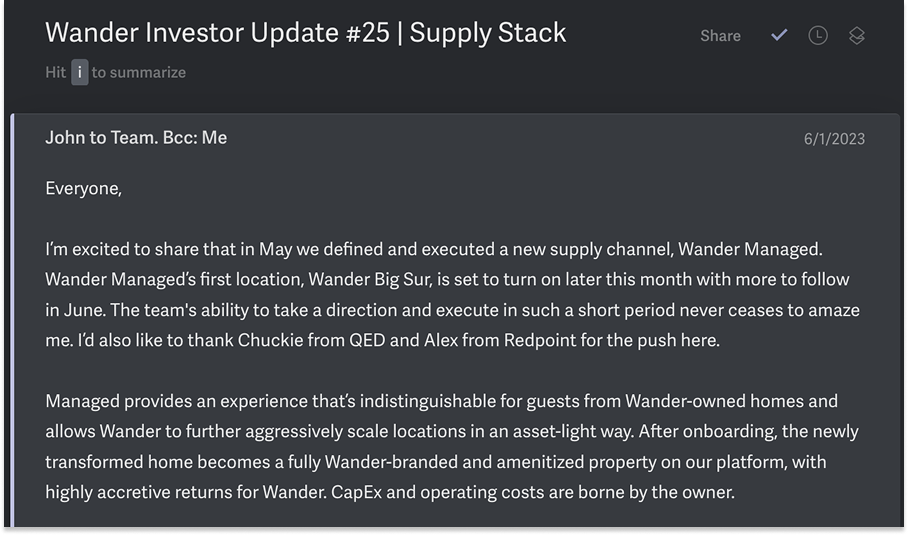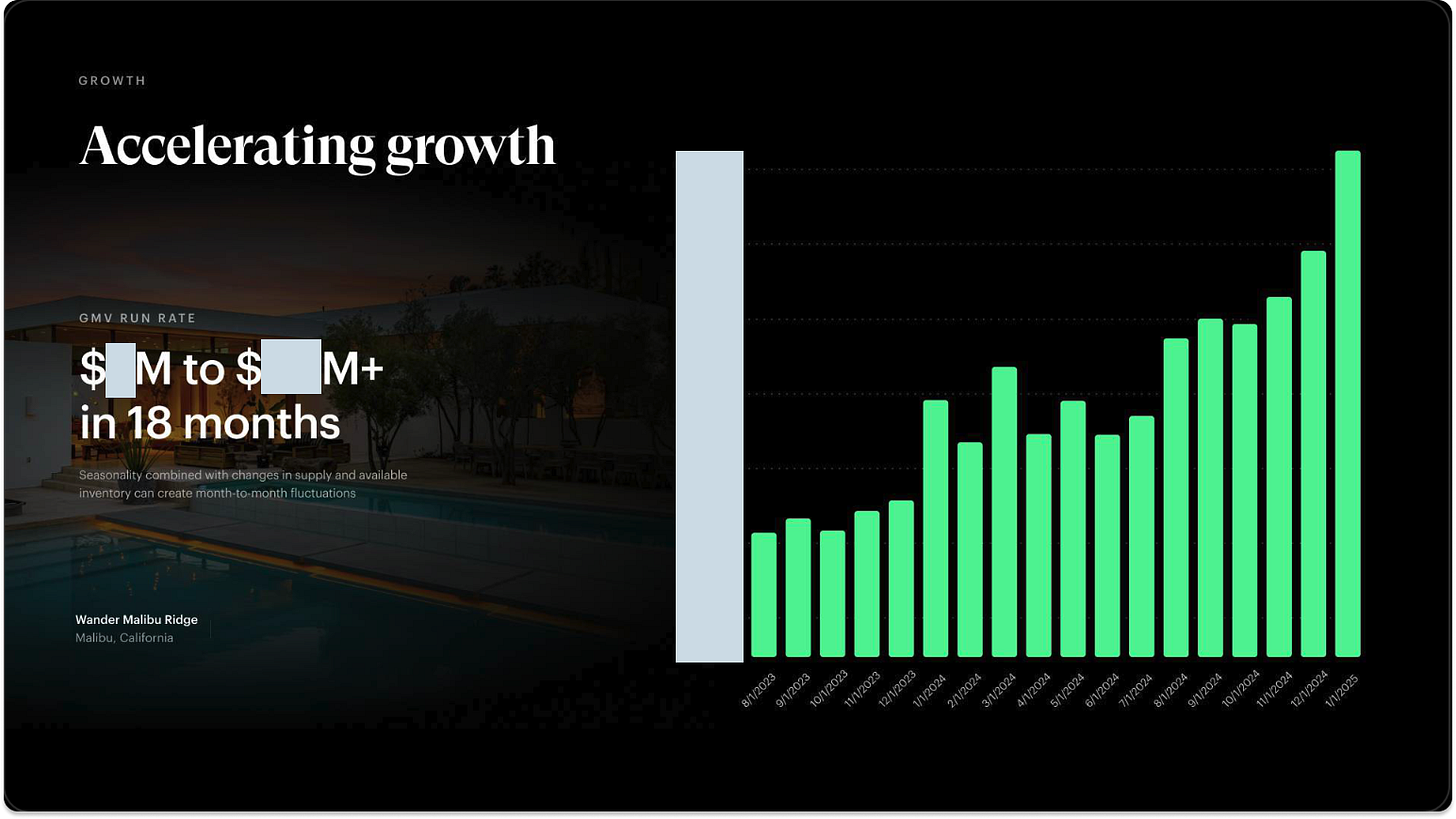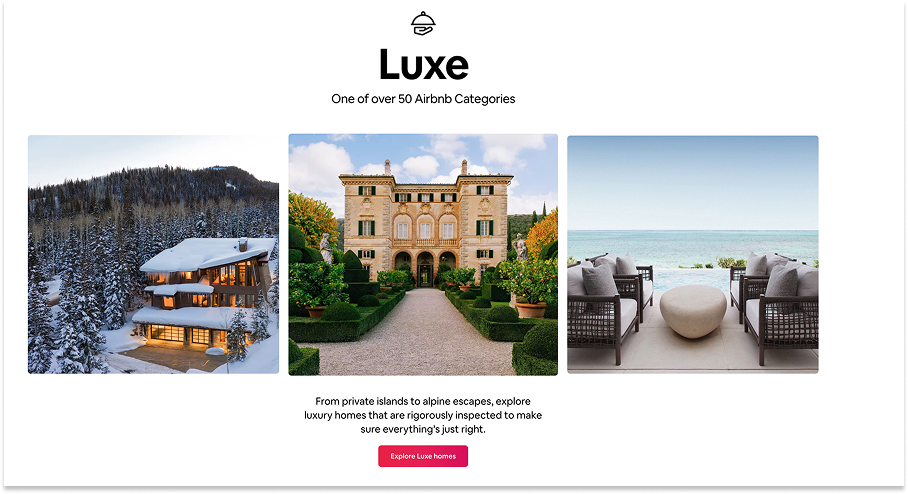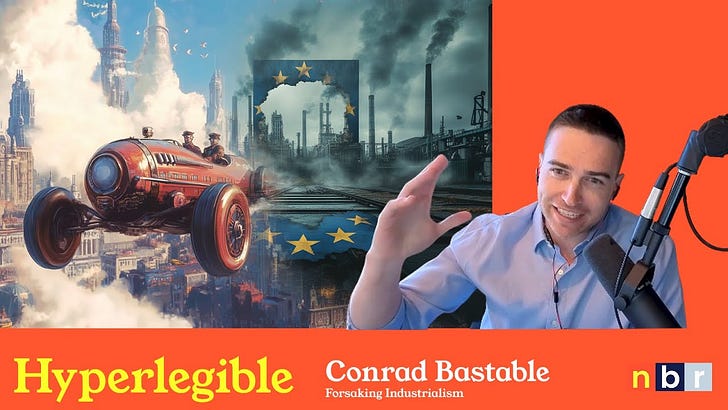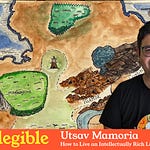Welcome to the 1,000 newly Not Boring people who have joined us since our last essay! Join 244,199 smart, curious folks by subscribing here:
Hi friends 👋,
Happy Wednesday! Sending this one a little later than usual because we’re timing it with an announcement about a portfolio company and previous Deep Dive subject:
Wander raised $50+ million in a Series B led QED and Fifth Wall
The fun part is, Wander did it by throwing out a lot of what we discussed in the first Wander Deep Dive — which, at the time, I said was the absolute right way to do things — and growing insanely fast while maintaining its high quality bar.
I started doing these Deeper Dives, following up on companies I’d written Deep Dives on in the past to understand what I got right, what I got wrong, and what we could learn from both, in March, with a Deeper Dive on Primer. I gotta admit, I was a little smug: Primer was doing great, in large part because it had gone more vertically integrated, which is exactly my thesis on how these things should be built. “And if you want to fix K-12 education,” I wrote, “you need to build schools.”
Welp… over the past two years, Wander shut down the REIT I praised, went asset-light, grew from 13 to more than 1,000 locations, grew GMV 6x over the past 18 months, and is onboarding over $1 billion worth of real estate monthly. And while growing, its NPS has actually ticked up to 85.
Being wrong and learning is why I do the Deeper Dives! If companies could be built as cleanly as I can write an essay, I’d be a billionaire. You’ve got to play the game; the lessons emerge from the messiness, and from following the best companies as they evolve.
Read the essay below, watch on YouTube, listen on Spotify, and read the transcript.
Let’s get to it.
Today’s Not Boring is brought to you by… Vanta
Accelerate Your Company's Growth: Get the Compliance for Startups Bundle
To scale your company, you need compliance. And by investing in compliance early, you protect sensitive data and simplify the process of meeting industry standards—ensuring long-term trust and security.
Vanta helps growing companies achieve compliance quickly and painlessly by automating 35+ frameworks, including SOC 2, ISO 27001, HIPAA, and more.
Start with Vanta’s Compliance for Startups Bundle, with key resources to accelerate your journey.
Step-by-step compliance checklists
Case studies from fast-growing startups
On-demand videos with industry leaders
Wander: Deeper Dive
I first wrote about Wander over two years ago, in January 2023. The theme of the piece was that Wander was the fulfillment of a couple of ideas I’ve had over the years: Natively Integrated Companies, which I wrote about in June 2019, and Zillbnb (combining short-term rentals and iBuying), which I wrote about in June 2020.
Wander had brought the dream to life and cleverly cheated the laws of marketplace physics. By launching a REIT, Wander Atlas, it had engineered a business that had the product control of a vertically integrated company without the balance sheet intensity. I wrote, “Simply put, Atlas gives Wander a vehicle through which to scale its portfolio in a capital efficient manner while retaining the full control of the experience it believes is required to generate hospitality yields.”
This, I argued, is how a startup should compete with a giant marketplace like Airbnb: vertically integrate to create a more consistent product experience and to capture more of the dollars in each transaction. Ownership, I believed, was a necessary precondition of consistent quality.
John Andrew Entwistle , Wander’s founder and CEO, believed that too. In our conversation, he admitted, “To be clear, that was also my thesis. My thesis was that the actual ownership was totally critical.”
And it might have been! The product was delightful. I invested in the REIT and got a 22% return over a couple of years. There was something magical about owning a piece of the vacation properties you stay in.
“I think that's something I'm really proud of—that the thesis was correct,” John Andrew told me, reflecting on what turned out to be an experiment. “The institutionalization of vacation rentals as an asset class, the idea of guests owning a piece of the portfolio, it was all correct. It was just a question of how quickly it could scale in a really turbulent macro.”
See, when John Andrew and the team conceived of the REIT, interest rates were still near historic lows.
That meant two things: the REIT’s mortgage payments were lower, and the 8% yield it aimed for was more attractive. By the time the REIT launched in October 2022, the 10-year US Treasury yield had jumped up to about 4%. When I wrote the piece in January 2023, it had come back down to 3.5%. Over the next nine months, it marched all the way up to a high right under 5%. Mortgage rates are some spread over treasuries, and investors in a REIT expect some yield over treasuries for the risk they were taking, and so, Wander was squeezed on each side.
As markets crumbled in early 2023 and yields rose, Wander had a choice: grow more slowly with the existing product, or take a risk on a new one. By May, less than four months after the Deep Dive, it had both made its decision and executed against it. Wander launched Wander Managed (which would become Wander Operated).
What Wander Operated hoped to do is the real Holy Grail for real estate startups: maintain consistent quality and control without actually owning the asset. The benefits are obvious: faster scale and software-like margins. The drawbacks… you have to learn those by doing.
It’s what we tried to do at Breather many, many times. Practically each time a new senior person joined the company, we ran it back. They would say, “Instead of signing leases, we should do an asset-light model, like Airbnb!” Genius. We’d have meetings about it. We’d talk to landlords, who would invariably be uninterested in taking risk on a space instead of the certainty of a lease, particularly when they had mortgages to service. We’d talk to people who already had spaces that they were renting out on other platforms and convince them to put the space on Breather, too, which they would, because why not, but inevitably, they would not keep the space up to the standards we set and our customer support team would get frequent calls from our customers who were incensed that the space they had booked with us had been double-booked by someone else. So we’d kill the asset light plan, until the next new person came in with the genius idea to do asset-light, but right this time, and the cycle started over.
That’s why I thought the REIT was brilliant. Assuming a managed asset-light model was impossible, for the reasons listed above and others, then synthetically creating something that looked asset-light but was fully controlled was the best possible option.
And owning homes worked. Although the number of homes was small – 13 at the time of writing in 2023, when Wander financed the homes off its own balance sheet and through a $100 million credit facility with Credit Suisse - occupancy was an absurd 80-90% (compare to ~40% for Airbnbs) and Net Promoter Scores (NPS) were in the 80-90 range, too. Homes were profitable and loved. The plan was, with the REIT, to scale up that profitability and love without scaling up the demands on Wander’s balance sheet, one home at a time.
Necessity, however, is the mother of experimentation.
Rates shot up, making home buying at least temporarily untenable. To add insult to injury, Credit Suisse, with which Wander had the $100 million credit facility, blew up and had to sell itself to UBS.
Wander had a choice: grow more slowly or adapt.
To John Andrew, the choice was obvious: “Can you imagine how lame I would have been if it was just like, ‘Yeah guys, interest rates shot up, so we're just going to not grow for the next three years?’ That's not cool.”
So instead, Wander decided to grow, and to grow fast.
It wound down its credit facility with Credit Suisse. It worked to wind down the REIT, which it had spent a year and $1 million spinning up, ultimately returning 22% to investors in two years. And it put the infrastructure it had built to the test by launching Wander Operated, and then Wander Branded.
Under Wander Operated, Wander takes complete control of a property on behalf of its owner, upgrades the home with standard Wander amenities, and coordinates all property management, including cleaning, repairs, and guest services. Wander takes a percentage of each booking’s revenue, while the owner pays the mortgage and fees associated with property management.
Under Wander Branded, Wander lists homes on its website and handles distribution, booking, and concierge service, while owners, many of whom are professional short-term rental (STR) operators, handle the property management leveraging Wander’s agentic WanderOS software. Branded owners may list their homes on other booking sites like Airbnb, or their own, but Wander integrates its calendar with theirs to avoid overlap.
In both cases, the model is asset-light. Wander doesn’t own homes, and it doesn’t employ local property management employees. Instead, everything is Wander-curated and orchestrated through Wander software.
The question would be: would curation and software be enough to maintain Wander’s standards?
The answer, so far, is: surprisingly, yes.
In short, I was wrong about the degree to which Wander needed to vertically integrate. Going asset-light has been a boon to nearly every aspect of the business.
First, it has unlocked scale.
Instead of buying homes, doing light construction, and fully furnishing them, Wander filters for the best 1% of available vacation rentals, signs management agreements with owners, checks the properties, creates photo and video content, incorporates standard Wander amenities, and lists the location on wander.com. That is a much easier process, and it means Wander can add a lot more locations.
At the beginning of 2024, Wander had 35 locations. By the end of last year, they had 400. Just last month, in April alone, they added 350 locations.
Today, there are over 1,000 Wander locations, a goal achieved three quarters ahead of plan, including non-US locations in Mexico, Colombia, Ibiza, Antigua, and Trinidad, places where it would have been trickier to buy.
John Andrew told me that under this model, Wander could launch 5,000 homes per month – there are, he says, about 300,000 Wander-worthy homes in the world representing $35B in GMV - but that it’s scaling up in a controlled way because “ a lot of companies can go too fast and end up screwing up on NPS or whatever else.” Wander’s CMO, Kyle Tibbitts, tweeted earlier this week that “On average, Wander is launching more homes per day than it had total on the platform January 1st, 2022.”
With more locations come more bookings and more GMV (Gross Merchandise Value, or the total cost of the booking, from which Wander takes a take rate for its revenue). Kyle also tweeted that, “The record we set on Tuesday Wander for the most bookings in a single day held less than 48 hours… today we broke it again.”
Over the 18 months ending in January 2025, Wander grew GMV 6x, and it continues to grow. It set a new record in April 2025, 250% higher than GMV in April 2024.
That is exceptional growth, especially considering that while Wander doesn’t own the homes anymore, these are still physical homes in the physical world with all sorts of physical coordination challenges. Still, although the pace has been surprising, it’s unsurprising that Wander would be able to scale faster with an asset-light model. That’s half the point.
Second, it has unlocked margins.
The trade-off you make going from Owned to Operated and Branded is that you make a higher gross margin percentage but lower gross margin dollars on each home. In the Owned model, Wander takes all of GMV as its revenue, and then pays all of its costs – mortgage payments or rental payments to the REIT, property management costs, etc… – out of that number. In the Branded or Managed model, it takes a take rate on the GMV – something around 30% – and the owner keeps 70% to cover their costs plus a profit.
On that ~30% take rate, John Andrew said, “We're operating around 70% gross margins for the Operated homes. Pretty high software margins as you'd expect, because it is software.”
So with the asset-light model, the formula is something like: higher gross margins on a smaller revenue number per location across many, many more locations. To John Andrew’s point, you end up with a model that looks a lot more like software, because it is.
So far, so good, but still unsurprising. More scale and better margins is why you go asset-light.
The surprising part is that Wander’s NPS has actually ticked up to 85, compared to a 24 for Airbnb, a 6 for VRBO, and a 17 for Marriott, despite giving up the full control over the property that comes with ownership.
Even John Andrew didn’t expect this. “Again, my assumption was that ownership of the homes was an actual requirement,” he told me. “I did not think we'd be able to exact our brand standards onto third-party inventory.” The reason the company exists is that John Andrew thought that the existing vacation rental platforms couldn’t exact standards because they didn’t have enough control over their third-party inventory.
Given the environment, though, he didn’t have a choice, and by testing, he learned that his assumption was incorrect. “I was wrong, but because I tested it, I was also right.”
My assumption was also wrong, which is why I wanted to write this Deeper Dive. I thought that more vertical integration would be better. I viewed the Wander REIT model as almost a platonic ideal. And I was wrong, but because I invested in John Andrew, who tested it, I was also right.
Understanding why both of us were wrong/right adds richness to our ongoing study of vertical integration, so it’s worth unpacking how Wander has been able to maintain its brand standards without owning the underlying assets.
There are two main reasons:
Going asset-light actually improved the quality of the homes it could offer.
Wander’s software has been able to maintain quality without owning the home.
Improving the Quality of the Homes
When Wander was purchasing homes itself, it had certain requirements the home had to meet, a “buy box.” As John Andrew explained:
When we were buying assets, we were looking anywhere between $1 million to $3.5 million, generally trying to target an 8% cap, fully optimized. That was really where we were looking. Then there were certain target markets, revenue potentials, et cetera.
Maintaining financial discipline is good business when you are buying expensive assets, whether off your own balance sheet, through a credit facility, or through a REIT. It made sense for Wander not to overreach on really expensive homes that it hadn’t yet proved it could generate a return on. The plan was to buy homes that cost between $1 million to $3.5 million, generate a return on them, and slowly expand outwards as it did. And there were certainly amazing homes to be had in that price range.
But many of the world’s best vacation properties cost more than $3.5 million, often much more. By going asset-light, Wander was able to change its “buy box” and bring on more expensive properties. “What we're really focused on is what is the gross revenue potential of the asset to ensure that Wander is operating at the margin profile that we think is healthy and in line with our unit economics,” John Andrew said. The buy box expands from every nice property in the US that costs between $1 million to $3.5 million, to “every quality house in the world”:
So a focus on breadth of locations, being in new markets that we don't already have some type of density in. You'll also see us push even harder for those crazy trophy assets. When you go to Wander, obviously all the homes are beautiful, but I think that there are some that just truly inspire, and we will absolutely chase down every quality house in the world. We want it to be a livable version of Architectural Digest.
Now, Wander can offer an entire island:
And it has a house with room for 20 in Cartagena:
Those are just two I picked while scrolling the site, but to get a sense for the properties Wander offers, I highly recommend just scrolling for yourself.
While it might have been irresponsible for Wander to buy these homes themselves, someone already owns all of the world’s nicest homes, and many of them want to make as much money on them as they can when they rent them out. If Wander can offer that to owners, and handle the headache of managing the properties with software, the people who own the world’s nicest vacation homes will be happy to offer them to guests through Wander.
The vertical integration lesson: Vertically integrate when doing so means that you can offer a better product than you could without vertically integrating. Vertically integrate up to the point that it means you can offer a better product more profitably, and no further.
Maintain Experience Quality Through Software
In Better Tools, Bigger Companies, I wrote, “The right set of tools for the problem depends on the type of problem being solved. Certain problems are best solved with software, and others are best solved with hardware.”
What about the problems Wander is solving?
Wander operates in the physical world – homes are physical, the furniture in them is physical, people physically inhabit the homes during their booking – but Wander doesn’t build homes. The problem statement for Wander was not, “There are not enough nice vacation properties in the world.” If it were, Wander would have needed to vertically integrate so far that it bought land and built homes itself.
The problem statement that John Andrew set out to solve was: “People have bad vacation rental experiences and bad travel experiences.”
Why?
Airbnb believed that people wanted more choice beyond hotels - to stay in homes and “live like locals” - and that people who owned homes wanted a way to make money off of booking them. In his classic Netflix and the Conservation of Attractive Profits, Ben Thompson wrote that Airbnb “commoditized trust, divorcing it from the underlying physical property. That freed Airbnb to integrate trust into a worldwide network of hosts and guests:”

It integrated trust and reservations – with software – modularizing the underlying physical properties. Seeing a home with a 4.9 star review on Airbnb gave people the comfort to book a place to stay that didn’t have to fly under a hotel flag. Booking a vacation rental was a problem that was best solved with software.
Airbnb has been an enormous success. In Chaos is a Ladder, I pointed out that “Hotels still exist, but by market cap, Airbnb is larger than any of them.” It is a $78 billion software company.
But as we discussed in the original Wander Deep Dive, some of the shine has come off of Airbnb as guests encountered surprising inconsistencies in the properties, high cleaning fees, lockouts, and even the demand that guests clean up after themselves. While Airbnb solved booking, it hadn’t necessarily solved what happens once you’ve booked. It hasn't solved property management. Mutual ratings, while powerful, don’t clean homes. They only get you so far.
This was the problem that John Andrew set out to solve with Wander. At first, he believed that the way to solve it was by owning the homes and controlling everything. But because Wander was responsible for doing everything itself, across a growing number of far-flung properties, it had to build software to help itself.
It built its own internal property management software, Wander OS, which “handles everything—vendor management, guest communication, vetting, task management, intelligent pricing, you name it.” And, John Andrew said, it turns out that that software could solve the property management problem, even when Wander didn’t own and manage the homes:
As that scaled, by the time we hit year three, it was actually pretty strong. It was able to orchestrate vendors 100% through the software. We didn't have any local property managers. Everything was just third-party vendors orchestrated through the software. When we started to add third-party inventory, the question was: would that be enough to basically exact quality standards from a curation perspective, to coordinate the vendors to a certain standard, and then to have really wonderful customer support? It turned out that it was.
Today, a growing number of customer requests are handled through Wander’s Concierge software, powered by AI of course. And 100% of vendor orchestration is managed through software, which contains a lot of checks and balances to ensure quality:
For example, a cleaning crew will go through the house. They'll click off certain things in their checklist. They'll also upload photos and videos. Those photos and videos will be analyzed by an AI agent. Then you also have a property inspector who will come through the house afterwards to make sure everything's good. All those vendors, to be clear, are paid for by the owner.
If property management comes down to orchestration and coordination, then it is an information problem that is best solved with software.
Instead of vertically integrating up to home ownership, then, the way to view Wander is that it’s actually building two aggregators and fusing them together.
On the one side, it’s aggregating homes and guests, like Airbnb does. On the other, it’s aggregating local vendors and owners, which Airbnb does not do.
Vendors are discovered, hired, and managed by Wander and its software, and paid for by owners. Vendors have both the tools and the incentive to do a good job. Wander, as it expands in an area, will be a larger and larger source of demand for their services, so vendors who do a good job can expect to get more business from them. And owners are incentivized to pay for quality vendors if Wander can make them more money than they could make otherwise, even net of fees.
Wander’s high brand standards, including inventory quality and property management, are the reason that it can charge higher prices and fill inventory at higher rates. Higher prices (the average booking is over $5,000) and fill rates mean that owners earn more money. And owners earning more money means that they can afford to pay for quality vendors to maintain Wander’s quality standards.
Importantly, this wouldn’t work for Airbnb because of its lower revenue per booking. A $300 cleaning eats a lot more of a $1,000 booking than it does of a $5,000 booking, so with Airbnb, cleaning fees are passed to guests as an additional charge. And because cleaning costs have a lower bound – one or more people need to travel to a location and spend time cleaning it, no matter how small or cheap it is – Airbnb cleaning fees often seem exorbitantly high relative to booking price, annoying guests and resulting in a lower NPS.
Structurally, Airbnb can’t match Wander here, so it’s not even trying to. Instead, it’s On the Road to becoming “a platform, a community,” whatever that means.
Of course, this is a trade-off, too. Airbnb has more scale than Wander: its 8 million active listings worldwide are 27x higher than the total 300,000 homes that Wander is even targeting. There will be room for both: Wander at the high-end of the market, and Airbnb for everything else.
So far, though, it looks like Wander will be able to capture the high-end, and meet the expectations that come with it, with an asset-light, software-powered model and without needing to purchase and fully control homes. I was wrong about that, but being wrong might turn out to make my investment look more right.
The vertical integration lesson: Understand the problem that you are trying to solve and whether it can be solved with software or needs to be solved with hardware. If you’re building supersonic planes, you need to make your own engines. If you’re building better schools, you need to run your schools. If you’re coordinating around existing supply, you need to build better software.
Actually, an aside on Airbnb
Actually, I went back and re-read that Airbnb Wired article and I need to write a little bit on it. Reading the last few paragraphs, I wouldn’t blame you for thinking, “Wander won’t actually capture the high-end. Airbnb will be the high-end Airbnb.”
And it could! It would mean building property management software, which is hard but doable, and coordinating local vendors, which it’s kind of trying to do anyway with its new/old Experiences product, and Airbnb already has Luxe, higher-end properties that go through a 300-point checklist.
But it won’t, because of what Airbnb CEO Brian Chesky said in that Wired article, but actually, first, I just clicked on the Luxe website and even that alone shows you why Airbnb won’t be the high-end Airbnb.
For one thing, look at how they describe it, themselves:
“Luxe: One of over 50 Airbnb categories.” You can taste the taste.
For another thing, look what happens when you click on “Explore Luxe homes”:
You get kicked over to a page of homes and rooms that don’t look very Luxe, which would suggest that they’ve deprecated the product. In 2023, they shut down the similar “Plus” program “in an effort to protect our core service.” It doesn’t seem like this is a focus.
So what is? OK, back to the original digression.
Wired, once the internet’s first home for techno-optimists, has become fairly antagonistic towards tech companies, so normally I don’t give it much credence, but the most damning things in the article are things that Chesky said himself. I don’t need to go into all of it here, but it’s bad. You should read it. It’s incredibly cringe. (“He brings up Apple again, saying that both companies embody the idea that a business relationship can generate emotion. ‘My ambition is kind of like the ambition of an artist and designer,’ he says.”) Apparently he’s also working with Sam Altman and Jony Ive on OpenAI’s new device.
But the line I want to focus on is this:
“There's a scenario where I'm basically done. Airbnb is very profitable. We've kind of, mostly, nailed vacation rentals. But we can do more.”
Airbnb is starting to lose guests back to hotels. NerdWallet travel writer Sally French recently explained, “What started as a quirky, affordable, community-driven alternative to hotels has, in many cities, become more expensive than hotels, with added cleaning fees, long checkout lists and inconsistent quality,” she said.
Nailing vacation rentals would require fixing all of that. Fixing all of that is really hard, though, and it’s not that much fun. So instead, Chesky told the audience at the Experiences launch event, “Hotels do have one thing that we don’t have, and those are services.”
Hence, the new Services and Experiences categories. Hence, the partnerships on those experiences with people like Conan O’Brien, Sabrina Carpenter, and Patrick Mahomes. Hence, the new icons “drawn by a former Apple designer whose name Chesky would not divulge. ‘He’s a bit of a secret weapon,’ he says.”
I can’t believe I’m writing this, but all of this makes Airbnb sound like exactly the type of company you’d want to compete with: a company that believes it’s made it, is bored, and is distracted by shiny new things.
All of which is to say, if Wander stays focused, it has a real shot.
What’s Ahead for Wander
And now it has the resources, too.
Today, Wander is announcing that it’s raised a fresh $50 million+ in a Series B led by QED and Fifth Wall along with participation from Redpoint, Uncork, Starwood Capital, Authentic, Breyer Capital, and others.
The name of the game now, John Andrew told me, is “thoughtful scale”: focusing on unit economics, what’s working, what’s not, activating existing customers, building software to handle more and more operations, and spending marketing dollars well. It’s not the sexiest phase of the business – John Andrew calls it the “chicken and broccoli” phase – but it’s where Wander will begin to compound into something that is working and durable.
When I asked him what the thing is that Wander is trying to compound, John Andrew said it’s about capturing more of those 300,000 Wander-worthy homes.
“There are network effects in this marketplace and we're starting to see those show up. Every new location we add makes the platform more valuable to more users,” he said “If we have a house in Aspen, now people who go to Aspen can stay at a Wander. That extends across the entire globe.”
From that compounding base, it can experiment thoughtfully, in ways that enhance the guest experience:
You'll see some other cool things around the guest experience that I'm just personally really passionate about. Concierge being able to book your flights and rental cars and dinners and experiences—I think it's really beautiful. So you'll certainly see those capabilities. But at the end of the day, we're just going to keep delivering on that core promise: you go to wander.com, you book a house, you're going to have a great trip. And in the very, very low odds that something does go wrong, you're going to have a team that cares more about you than your own parents.
It’s also starting to test offering WanderOS to people in their primary residences, a product it calls Wander Living, which a few people are already using: “The reaction's off the charts, as you would expect. Full property management for your single-family home. Plus you can go and stay across the portfolio.”
Finally, he says, “You'll also see WanderOS end up being productized more broadly across the industry. I'd say those will be the three things. You'll see a bunch of other things around embedded finance, insurance products, mortgage products.”
Ultimately, the goal is “to build the infrastructure for people to experience the world,” to help more people Find Their Happy Place™.
To build the “Apple of travel.”
If Airbnb is Android, the open platform, then Wander is trying to be Apple, the premium user experience within a controlled ecosystem. For Apple, which makes hardware, that means vertical integration all the way down to the chips. For Wander, the company is betting, it means orchestrating the world’s best travel experiences with software on top of its best existing hardware, the kind of homes you see in Architectural Digest.
That’s the plan, at least, and scaling from Series B to Series C is all about improving against the existing plan.
But things change. As they do, I’ll be right back here telling you what I got wrong and right.
The meta-lesson from these Deeper Dives is that the vision remains unchanged, but in order to achieve it, you will almost certainly need to change your tactics along the way. The game is to invest in the people who can make that complexity look easy.
John Andrew shared a whole lot more in our conversation. To learn from the man himself, watch our conversation on YouTube:
Listen on Spotify (or wherever you listen to podcasts):
Or read the transcript here.
Thanks to John Andrew, Kyle, and the Wander team for your input and letting me be a part of the Wander journey, and to Jordi & John for the jingle!
That’s all for today. We’ll be back in your inboxes Friday with a Weekly Dose.
Thanks for reading, listening, and watching,
Packy




